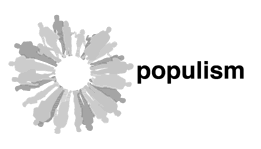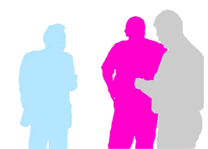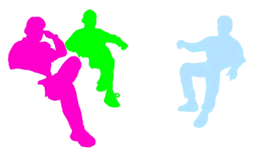Jens Haaning and Superflex
One can hardly illustrate cultural exchange between the western world and the Middle East in a more cynical way than in the project that Jens Haaning and Superflex proposed to Statens Museum for Kunst in Copenhagen. The project consisted of buying a road tanker in Iraq, filling it with oil and then driving it all the way from Iraq to Copenhagen. The filled road tanker would then be parked in front of the museum’s entrance during the exhibition period. Haaning and Superflex’s parallel trade emphasises the most serious exchange of values existing between the two cultures – oil and money. Iraqi Oil Truck, which was never realised, is the first collaboration between Haaning and Superflex. The project contains elements that are characteristic for both parties’ ways of working.
Haaning has earlier concerned himself with cultural and economic exchange in a similar way. In the project Copenhagen-Texas (Light Bulb Exchange) from 1999 he transported a fluorescent tube from a Vietnamese-owned grocer in a poor, black area of Texas all the way to Denmark. A discreet marker of the grocer’s alienated position – as a Vietnamese person in a black ghetto in the USA – the fluorescent tube was installed in an exhibition space in Denmark, while the just-as-foreign ‘Danish’ fluorescent tube was installed in the shop in Texas.
It is also not the first time that Superflex work with energy and energy extraction. Together with Danish and African engineers, the group developed the so-called Supergas – a simple biogas unit, which can be easily transported and which can transform organic material into enough gas to provide for the energy needs of one family. The Supergas project operates on an alternative, micro-economic scale that is far away from the oil industry’s high-stakes political games within world economy. And contrary to the import of oil, Superflex deals with the export of energy – in the form of the necessary technological expertise.
Haaning and Superflex’ project for Populism is entitled Number of Visitors and consists of a large digital counter, which will be located on the façades of all four European art institutions where the exhibition takes place. The counter is connected to the ticket office of the institution, and will continuously show the number of visitors. The installation thereby becomes an illustration of most cultural institutions’ conditions and criteria for success – the more visitors, the more opportunities for economic support. Number of Visitors exposes an important aspect of the art institutions’ activities for the audience and the passers by – the need to be visible and attract attention. The danger of the populist strategies that are brought into play here is obvious.
By Pernille Albrethsen, translated by Eva May
SUPERFLEX: From “guarana power” (2004) Pictures by Superflex
JENS HAANING: "086 REDISTRIBUTION (LONDON-KARACHI)" (2003 - the chairs of the café of ICA Gallery, London were exported to Karachi, Pakistan, here they got placed on the street and anybody passing by where able to take one or more of the chairs.) (ICA, London, England, 2003.)
Photo: Jens Haaning. Courtesy: Galleri Nicolai Wallner, Copenhagen, Denmark.
|









